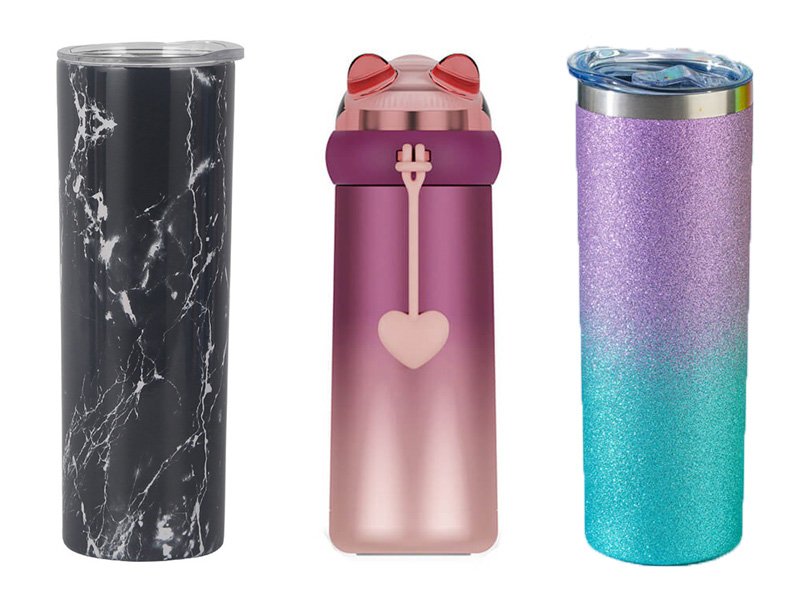
Introduction:
In the dynamic realm of sports and fitness, staying hydrated is paramount. As athletes and fitness enthusiasts prioritize their health, the demand for high-quality sports water bottles has surged. This comprehensive guide delves into the intricate world of sports water bottle manufacturers, exploring key aspects such as materials, design, sustainability, and market trends.
Section 1: Understanding Sports Water Bottle Materials
1.1 Plastic Bottles:
- Discussing the most common material used in sports water bottles.
- Analyzing the different types of plastics, their pros, and cons.
- Highlighting innovations in BPA-free and eco-friendly plastics.
1.2 Stainless Steel Bottles:
- Exploring the durability and insulation properties of stainless steel.
- Evaluating the benefits of stainless steel in maintaining beverage temperature.
- Examining the weight and environmental impact of stainless steel bottles.
1.3 Glass Bottles:
- Unpacking the appeal of glass for sports water bottles.
- Addressing concerns related to fragility and weight.
- Showcasing advancements in shatter-resistant glass technology.
Section 2: Design and Functionality Considerations
2.1 Ergonomic Designs:
- Investigating the importance of ergonomic designs for sports water bottles.
- Highlighting features like grip, spouts, and straw designs.
- Showcasing designs tailored for various sports activities.
2.2 Cap and Closure Systems:
- Analyzing the role of cap and closure systems in preventing leaks.
- Discussing flip-top, screw-on, and push-pull cap designs.
- Exploring innovations in one-handed operation for on-the-go hydration.
2.3 Size and Capacity Options:
- Understanding the significance of selecting the right size for different activities.
- Discussing the variety of capacities available in the market.
- Providing insights into specialized bottle sizes for cyclists, runners, and gym-goers.
Section 3: Sustainability and Eco-Friendly Practices
3.1 Recyclable Materials:
- Examining the push towards recyclable materials in sports water bottles.
- Highlighting the challenges and advancements in bottle recycling.
- Showcasing manufacturers leading the way in sustainable practices.
3.2 Reusable and Refillable Options:
- Discussing the rise of reusable and refillable sports water bottles.
- Exploring the impact of disposable culture on the environment.
- Showcasing innovative refill stations and programs.
3.3 Carbon Footprint Reduction:
- Evaluating the efforts made by manufacturers to reduce carbon footprints.
- Exploring eco-friendly packaging and shipping practices.
- Discussing the role of consumers in supporting sustainable brands.
Section 4: Market Trends and Innovations
4.1 Smart Water Bottles:
- Unveiling the integration of technology in sports water bottles.
- Discussing features like hydration reminders and temperature monitoring.
- Analyzing the market response to smart water bottle innovations.
4.2 Customization and Branding:
- Exploring the trend of personalized sports water bottles.
- Discussing the impact of branding on consumer choices.
- Showcasing examples of successful branding strategies.
4.3 Collaborations and Limited Editions:
- Analyzing the popularity of collaborations between manufacturers and athletes.
- Discussing the allure of limited edition sports water bottles.
- Examining the influence of exclusive releases on consumer behavior.
Section 5: Choosing the Right Manufacturer
5.1 Research and Reviews:
- Offering guidance on conducting research before selecting a manufacturer.
- Discussing the importance of customer reviews and testimonials.
- Providing a checklist for evaluating the reputation of manufacturers.
5.2 Certifications and Standards:
- Highlighting industry certifications for sports water bottle manufacturers.
- Discussing adherence to quality standards and regulations.
- Examining the role of certifications in ensuring product safety.
Conclusion:
As the fitness and wellness industry continues to flourish, the importance of a reliable sports water bottle cannot be overstated. Navigating the realm of sports water bottle manufacturers involves understanding materials, design considerations, sustainability practices, and staying abreast of market trends. By empowering consumers with this knowledge, this guide aims to facilitate informed choices and contribute to a healthier and more sustainable hydration culture.




Your article helped me a lot, is there any more related content? Thanks!
Your article helped me a lot, is there any more related content? Thanks!
Your point of view caught my eye and was very interesting. Thanks. I have a question for you.
Can you be more specific about the content of your article? After reading it, I still have some doubts. Hope you can help me.
Хотите делать ставки на спорт быстро и удобно? Скачайте [url=https://mostbet-wbl2.xyz/]приложение мостбет[/url] и наслаждайтесь доступом к лучшим коэффициентам и широкой линией событий прямо на своем устройстве.
Используйте [url=https://mostbet-wyi3.top/]актуальное зеркало мостбет[/url] casino для доступа к игровым автоматам и слотам сегодня и сейчас без блокировок и ограничений.
Your article helped me a lot, is there any more related content? Thanks!
Your article helped me a lot, is there any more related content? Thanks!
Your article helped me a lot, is there any more related content? Thanks!
Thank you for your sharing. I am worried that I lack creative ideas. It is your article that makes me full of hope. Thank you. But, I have a question, can you help me?
Thanks for sharing. I read many of your blog posts, cool, your blog is very good.
Thanks for sharing. I read many of your blog posts, cool, your blog is very good.
I don’t think the title of your article matches the content lol. Just kidding, mainly because I had some doubts after reading the article.
Thanks for sharing. I read many of your blog posts, cool, your blog is very good.
Can you be more specific about the content of your article? After reading it, I still have some doubts. Hope you can help me. https://www.binance.info/en-IN/register-person?ref=UM6SMJM3
Can you be more specific about the content of your article? After reading it, I still have some doubts. Hope you can help me.